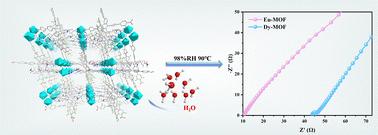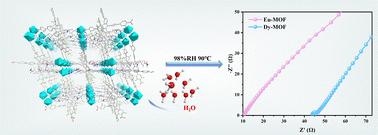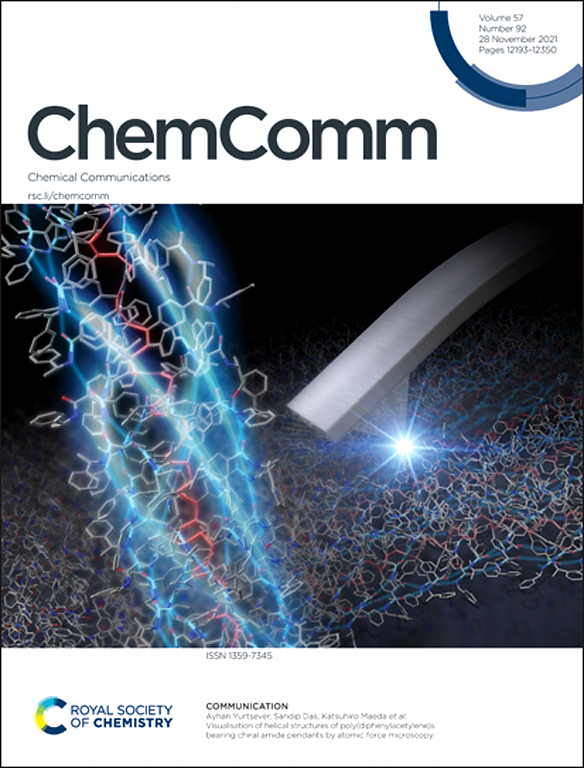基于四苯基乙烯的两种新型镧系金属有机骨架用于超高质子传导
IF 4.2
2区 化学
Q2 CHEMISTRY, MULTIDISCIPLINARY
引用次数: 0
摘要
以四苯基羧酸乙烯为配体,成功构建并表征了两种新型阴离子镧系金属有机骨架(Me2NH2)[Ln(HTCBPE-F)·(HCOO)·DMF]·4.5DMF·2H2O (Eu-MOF和Dy-MOF)。这两种mof具有多孔结构和水稳定性,具有不配位羧酸基团和二甲基铵阳离子,在98% RH(相对湿度)和90°C下具有高质子电导率(5.35 × 10−2和1.22 × 10−2 S cm−1)。基于结构特征和活化能,提出了质子转移机理。本文章由计算机程序翻译,如有差异,请以英文原文为准。


Two novel lanthanide metal–organic frameworks based on tetraphenylethylene for ultra-high proton conduction†
Two novel isostructural anionic lanthanide metal–organic frameworks, (Me2NH2)[Ln(HTCBPE-F)·(HCOO)·DMF]·4.5DMF·2H2O ( and ), based on tetraphenylethylene carboxylate ligands were successfully constructed and characterized. These two MOFs possess porous structures and water stabilities with uncoordinated carboxylate groups and dimethyl ammonium cations, which allow for high proton conductivities (5.35 × 10−2 and 1.22 × 10−2 S cm−1) at 98% RH (relative humidity) and 90 °C. Based on the structural characteristics and activation energy, the proton transfer mechanism is proposed.
求助全文
通过发布文献求助,成功后即可免费获取论文全文。
去求助
来源期刊

Chemical Communications
化学-化学综合
CiteScore
8.60
自引率
4.10%
发文量
2705
审稿时长
1.4 months
期刊介绍:
ChemComm (Chemical Communications) is renowned as the fastest publisher of articles providing information on new avenues of research, drawn from all the world''s major areas of chemical research.
 求助内容:
求助内容: 应助结果提醒方式:
应助结果提醒方式:


